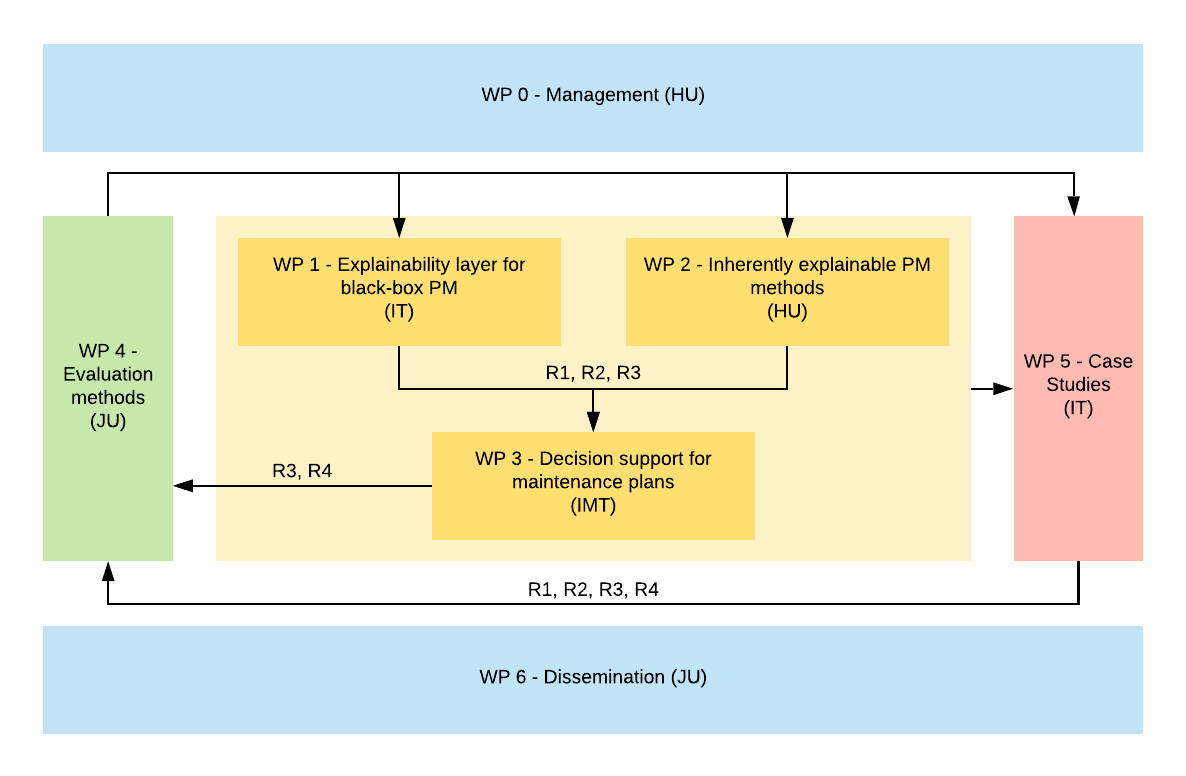![[The graphic presents 5 logos, in 3 rows. In the top row there is a logo of the XPM Project, which is an eyeball surrounded by a black-green spiral. Second and third rows present logotypes of the project funders. In the second row there are logos of French Agence Nationale de la Recherche and Portugese Fundação para a Ciência e a Tecnologia. The lowest row contains logos of Polish Narodowe Centrum Nauki and Swedish Vetenskapsrådet.]](https://portal.uj.edu.pl/documents/150784654/0/GIMP+logotypy.png/c8059dc6-2548-4d50-b9ba-dc9ee42449a2?t=1659012066842)
 Widok zawartości stron
Widok zawartości stron
 Widok zawartości stron
Widok zawartości stron
 Widok zawartości stron
Widok zawartości stron
XPM Project Structure
Below you can find general information about the project structure. The workplan included 7 work packages, further partitioned into tasks, briefly described on the sites listed on the left.
Consortium
- HU-Halmstad University, Sweden, PI: Slawomir Nowaczyk, Founder: VR
- IT-Inesc Tec, Portugal, PI: João Gama, Founder: FCT
- JU-Jagiellonian University, Poland, PI: Grzegorz J. Nalepa, Founder: NCN
- IMTLD-France IMT Lille-Douai, PI: Moamar Sayed-Mouchaweh, Founder: ANR
Dependencies
The project consists of 7 working packages (further called WPs), starting with WP0, ending with WP6. WP0 (Management) and WP6 (Dissemination) have organizational character and do not contain scientific tasks. WP1 is responsible for coordination of actions within other WPs and WP2 focuses on publishing the results of the research. WPs 1-5 conduct scientiific tasks and are interdependent, exchanging results between each other. The bulk of research is done within WP1 (Explainability layer for black-box PM), WP2 (Inherently explainable PM methods) and WP3 (Decision support for maintenance plans). Results achieved in WP1 and WP2 support the research conducted in the WP3. Effects of work in WP3 are then used during the research of WP4 (Evaluation Methods). Research done in WP4 helps to advance the work in all other research packages. It direclty supports WP1, WP2 and WP5 (Case StudieS), and indirectly supports WP3. The WP5 also bases on the research done by WP1-WP3. Case analysis done in WP5 helps to further develop evaluation methods established within WP4. ( The dependencies between the WPs in the project are also presented on the below graph. For the more specific information about each of the WPs, please click the menu on the left.
